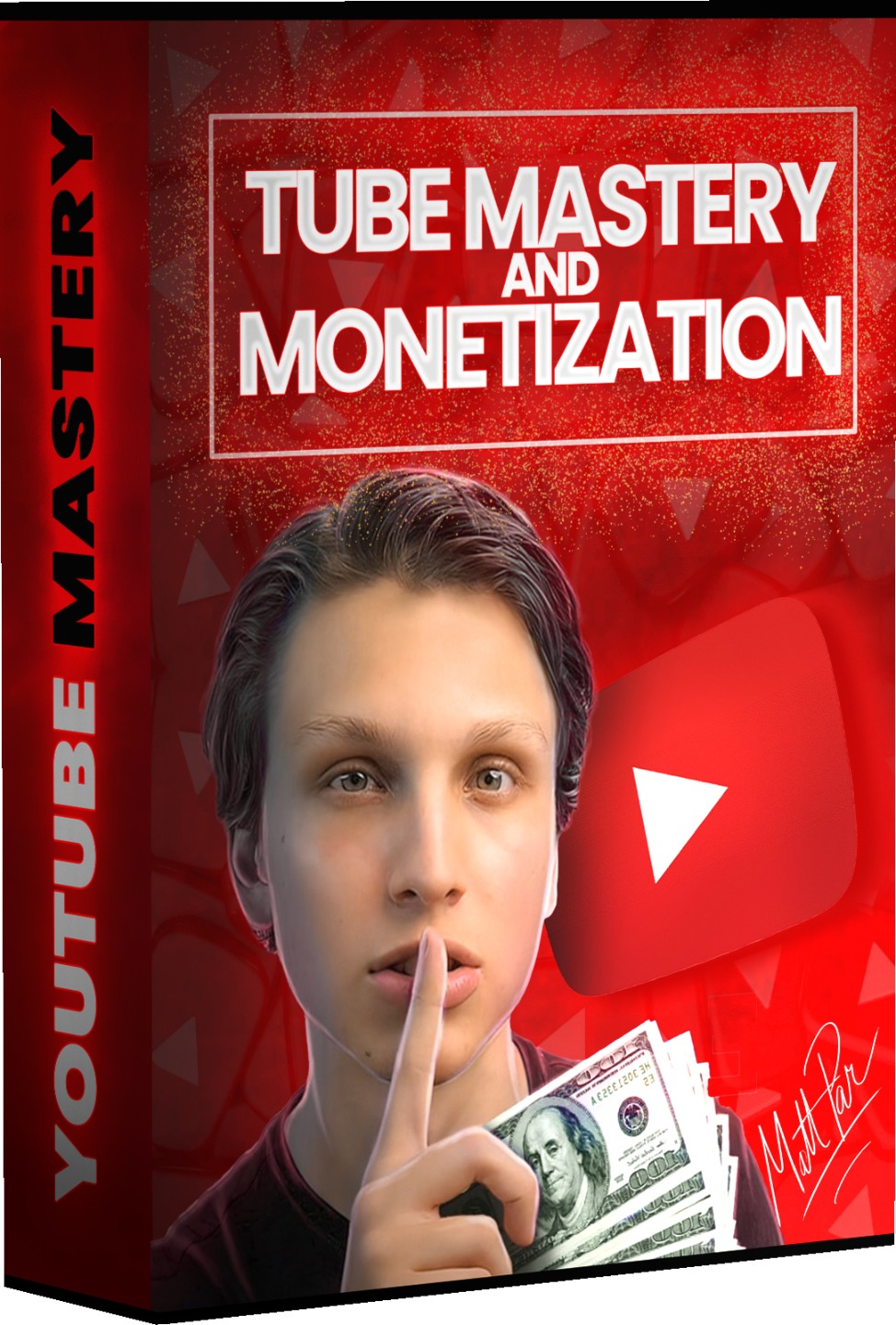Starting a YouTube channel can feel big. Maybe you think, “What if no one watches?” or “Do I need fancy gear?” or “I’m shy. Do I have to be on camera?” Take a breath. You are not alone. The Matt Par YouTube Course was built to make YouTube simple, calm, and step-by-step. Think of it like a friendly coach sitting beside you, saying, “Here’s your next move.”
This guide uses simple, clear words—plain examples, a kind tone, and beginner-friendly advice. By the end, you’ll see why this course is a strong first step, even if you’re brand new.
1) You Don’t Have to Show Your Face
Lots of people freeze when they see a camera. That’s okay. With the Matt Par YouTube Course, you can create great videos without ever showing your face.
How it works:
- Record a voiceover (even on your phone).
- Use screen recordings, slides, or stock clips.
- Keep edits clean and simple.
Your ideas are the star. Your face can stay off-screen. This helps shy people, busy parents, or anyone who values privacy. When the scary part is gone, you finally press Upload.
Why it matters: less fear → more action.
2) Clear Steps, No Guesswork
Posting random videos and hoping for luck is not a plan. The Matt Par YouTube Course gives you a roadmap you can actually follow:
- Pick a niche people care about.
- Find topics people already search for.
- Write short scripts and descriptions with a hook, 3–5 points, and a simple ending.
- Make thumbnails with large fonts and bold images.
- Post on a schedule you can keep (even once a week is fine).
- Check data like click-through rate and watch time. Adjust and improve.
Each step is small. Each step is doable. A map turns a maze into a path.
Why it matters: clear steps save time and stress.
3) Real Ways to Earn Money (Not Just Views)
Views feel nice, but views alone don’t pay bills. The Matt Par YouTube Course teaches real, simple ways to monetize:
- Ad revenue: join the YouTube Partner Program once you qualify.
- Affiliate links: share tools you trust; earn if someone buys.
- Sponsors: work with brands that fit your topic.
- Digital products: sell checklists, templates, or guides.
You don’t need all four at once. Start with one. Add more later. This turns “I post videos” into “I run a YouTube business.”
(Related terms you may see: Tube Mastery, monetization by Matt Par.)
Why it matters: a money plan keeps you motivated and growing.
4) Grow Without Burning Out
At first, you might do everything yourself—ideas, scripts, voice, editing, thumbnails, uploads. That’s normal. But as you grow, it can get heavy. The Matt Par YouTube Course shows a calm way to scale:
- Batch work: plan on Monday, script on Tuesday, record on Wednesday, edit on Thursday, publish on Friday.
- Use templates: save time on scripts, thumbnails, and descriptions.
- Outsource one task when ready (usually editing).
- Share a short checklist so helpers follow your style.
- Keep a simple tracker (Ideas → Script → Edit → Thumbnail → Upload).
You don’t need a big team. One part-time helper can save hours and protect your energy.
Why it matters: less stress → better videos → steady growth.
5) Taught by Someone Who Actually Does YouTube
Some people talk. Some people do. This course comes from a creator who has built multiple YouTube channels, many without showing his face. The lessons are based on real tests, real mistakes, and real wins.
You get:
- What topics usually work.
- How to make thumbnails that get clicks.
- Which traps to avoid.
- How to use numbers (not guesses) to make your next video better.
No hype. No magic tricks. Just practical steps that match how YouTube works today.
Why it matters: real-world proof builds real trust.
A Short Story (to Make It Real)
Ari was a beginner. No camera. No budget. Big doubts.
- Week 1: Ari picked one niche—easy tech tips for parents.
- Week 2: Ari wrote three scripts and recorded voiceovers on a phone.
- Week 3: Ari posted two videos with clean thumbnails.
- Week 4: Ari checked data, fixed a weak thumbnail, and planned five new ideas.
After eight weeks, Ari had a small but steady audience. One video climbed. An affiliate link earned the first $23. It wasn’t huge, but it was real. Ari smiled and kept going. That’s how channels grow—slow, steady, and honest.
30-Day Starter Plan (Copy This)
Week 1 – Plan
- Choose one niche (study tips, recipe hacks, simple tech help, calm crafts).
- List 20 video ideas people already search for.
- Draft 3 scripts (hook → 3–5 points → summary).
Week 2 – Create
- Record voiceovers on your phone in a quiet space.
- Use stock clips or screen recordings.
- Make 3 thumbnails with big, bold words.
Week 3 – Publish
- Upload 2–3 videos.
- Write short, honest descriptions.
- Add 3–5 tags.
Week 4 – Improve
- Check click-through rate.
- Check watch time.
- Fix weak thumbnails or hooks.
- Plan 5 new ideas.
Repeat next month. Small steps + steady pace = real growth.
Final Friendly Word
The Matt Par YouTube Course is perfect for beginners because it treats you like a human:
- You can build without showing your face.
- You get a roadmap, not random guessing.
- You learn real ways to earn, not just chase views.
- You grow with systems, not stress.
- You learn from real practice, not hype.
Will it take effort? Yes. Does it have to be hard? No. Start small. Stay kind to yourself. Let your next upload be one more brick in a steady YouTube business.
